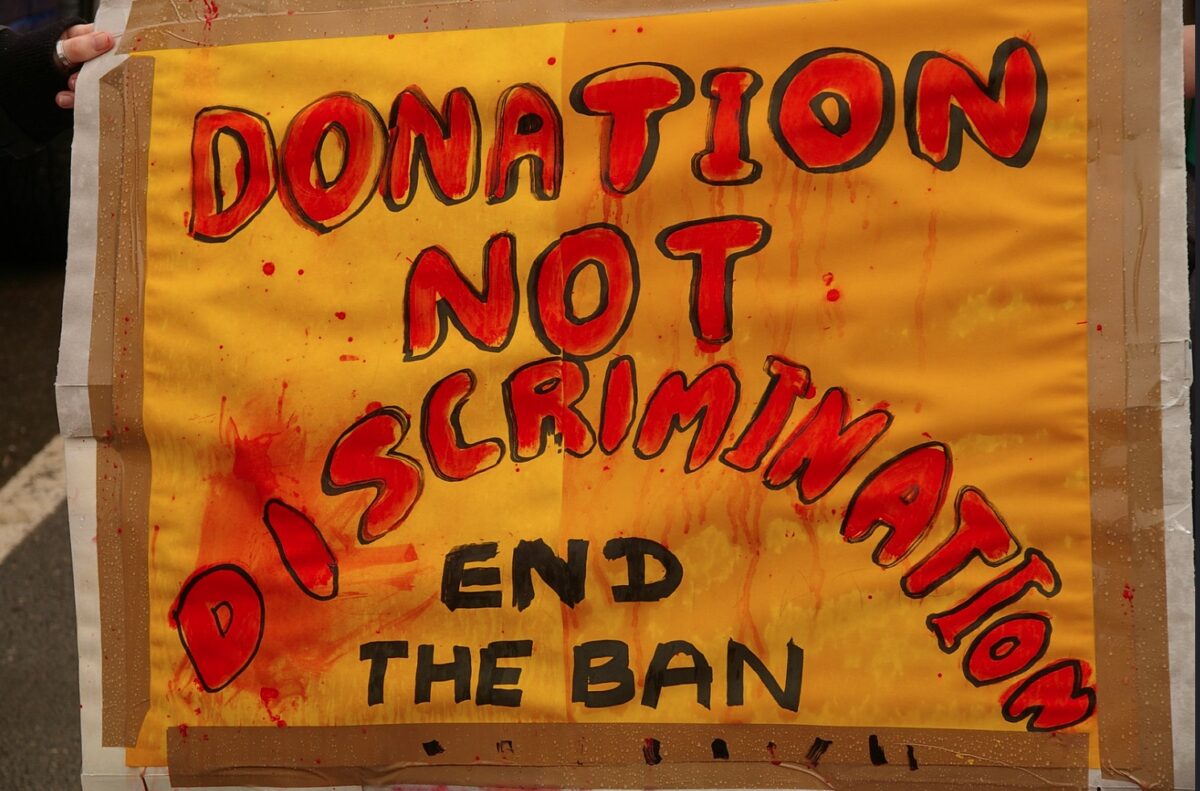By Noah Jones
When I began to accept my sexuality, I reached a point where I was comfortable with myself but not with how the world would treat me. I come from a background in the Southern Baptist Church. As a child, I was taught that there were people who did things the “proper” way and the “improper” way. No one would voice their opinions to a person’s face, but these whispers of rumored impurity delayed my coming out process. I cannot take societal norms for granted because I am not like the majority of society. I am limited in my ability to give blood. In the medical world, I fall under the category of MSM, or “men who have sex with men”. In the United States, MSMs were unable to donate blood from 1983 to 2015. In 2015 this restriction was changed to one year of abstinence. In 2020 this was shortened to three months, not because of compassion or open-mindedness, but from the dire need for blood during the COVID-19 pandemic. The history of these restrictions illustrates how far the United States has come since the start of donation restrictions. The advances we have made in both medicine and our society’s understanding of sexuality support the case for dropping all blood restrictions on MSMs.
Many of the current restrictions on MSM blood donations can be traced back to the beginning of the HIV/AIDS epidemic. Much like today with COVID-19, there was originally a lack of knowledge surrounding HIV/AIDS. One of the few things known about the virus was its prevalence among gay men. This prevalence influenced how the virus was seen by the medical world, and nowhere is that more obvious than its original name. The first name for the virus we know today as HIV/AIDS was GRID, which stood for gay-related immune deficiency. Gradually, the medical world and society at large learned that HIV was not a “gay disease.” HIV/AIDS is transmitted through blood and other biological fluids, and it is not dependent upon sexuality. Nevertheless, HIV/AIDS remains stigmatized as a “gay disease.” Part of that stigma is based on fact, as even today in the United States, more than half of the new HIV/AIDS diagnoses are from gay or bisexual men. I can understand how this may make some people nervous about our ability to give blood since without understanding the scientific advances made, it still has the stigma of being a dangerous practice. However, that does not excuse the rampant homophobia that is often still attached to anything involving HIV/AIDS.
After the connection between HIV and biological fluids was discovered, the FDA banned MSMs from ever being able to give blood. Considering the circumstances, this was not necessarily a poor idea for temporary guidance. After all, back in the 1980s, there was rampant misinformation on the general transmission of HIV, like the myth that it was spread through saliva. The issue is that this guidance was not changed as new science became available. In 1985, the first test for HIV was approved by the FDA. However, this test was only able to detect HIV type 1. In 1992, a test was developed to find HIV type 2 in a blood sample. By that point, it had become regular FDA guidance (generally followed as though it is the law) to test all blood donations for HIV. In the 1990s, many more tests were developed to test for the early signs of HIV that could go previously undetected. Despite the advancements in identification, FDA guidance remained the same for MSMs: a lifetime ban.
Back in 1996, the FDA admitted that the risk of passing on HIV through blood transfusion was minimal. Since that admission, there have been record lows in the documented transmission of HIV with a blood transfusion. Only three cases were reported in the 2000s in the United States, and there was an eight-year gap in which there was no transmission
Thirty years after the first HIV test was developed, the United States finally joined most of the modern world in allowing MSMs to donate their blood. The FDA did not officially change its guidance until 2015. Even then, it came with a caveat: MSMs must go one year without sexual activity with another MSM before they donate under these guidelines. This was the case in the United States until last year when the guidance was reduced to 3 months deferral due to a lack of donations in the face of the COVID-19 pandemic. The United States has joined much of the western world by changing its policy. The United Kingdom officially lowered its guidance to three months in 2017 and dropped the deferral period completely for monogamous MSMs. The bill allowing for this reduction in restrictions also funded research to drop the deferral period for all MSMs in the near future.
Blood donation is a noble use of time to help out our fellow humans in need. Too few people routinely donate their blood, which leads to constant shortages. Your local blood bank will not discriminate when they test your blood because no matter how you answer the screener questions your blood will be put through a variety of tests for diseases like Hepatitis, Syphilis, and yes, even HIV. Advances in medicine prove that the risk of giving HIV to someone through a blood transfusion is extremely low in developed countries like the United States. The outdated guidelines that men like me deal with when we donate blood must be reformed. I and other gay men are forced to deal with hatred every day, but to find it written into our medical codes is another level of homophobia. The United States has some self-reflection to do on how to account for its shameful handling of LGBTQ+ issues. The country can start these reparations by making my blood equal to that of all other Americans.

